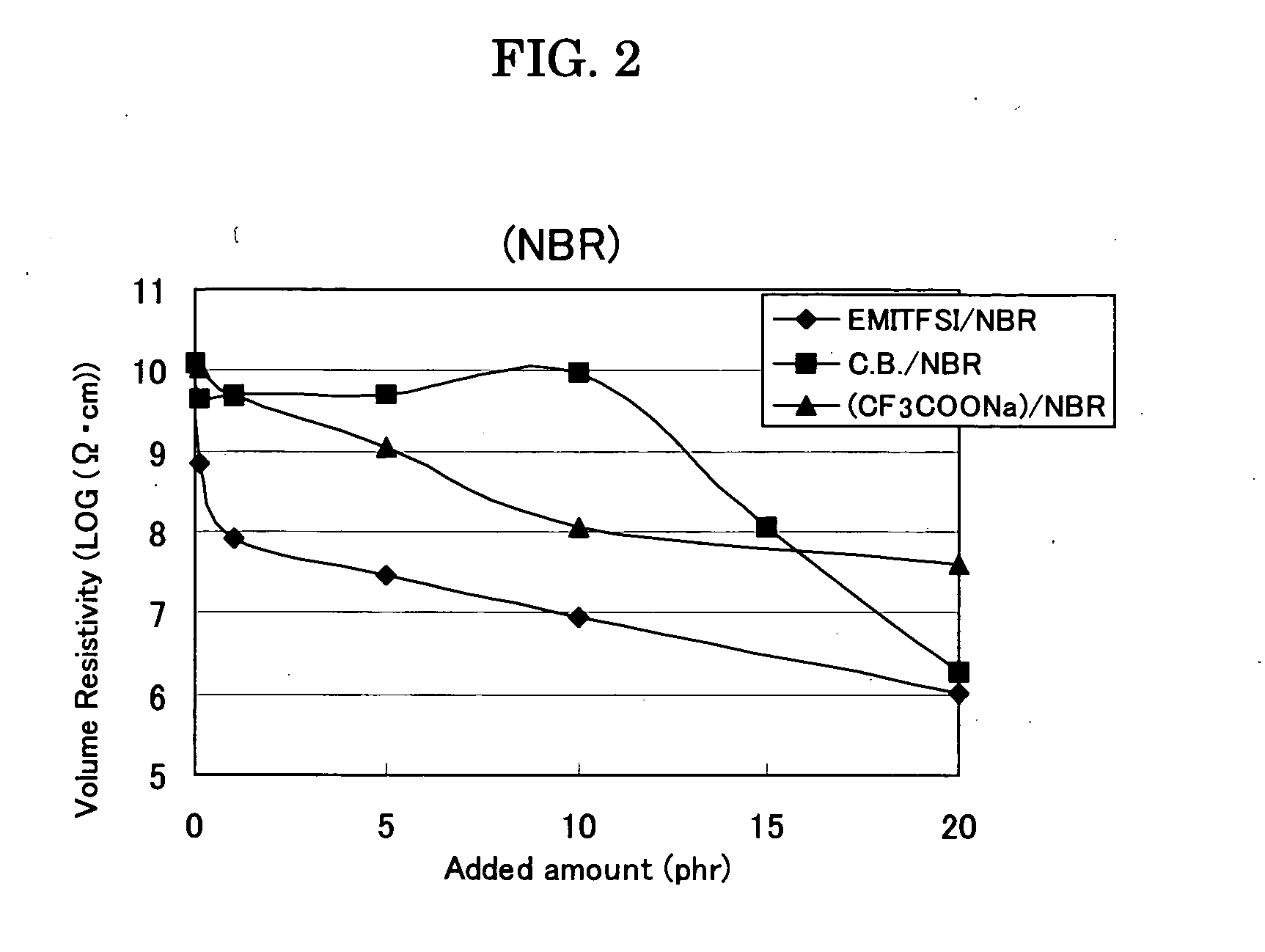Moderately resistive rubber composition and rubber member
a technology of moderate resistance and composition, applied in the field of moderate resistance rubber composition and moderate resistance rubber composition, can solve the problems of difficult to reliably achieve moderate electrical resistance, risky handling of lithium perchlorate, etc., and achieve the effect of not significantly changing the volume resistivity
- Summary
- Abstract
- Description
- Claims
- Application Information
AI Technical Summary
Benefits of technology
Problems solved by technology
Method used
Image
Examples
examples 1 through 5
[0051] 1-Ethyl-3-methylimidazolium bis(trifluoromethylsulfonyl)imide (EMITFSI) was employed as an ionic liquid. EMITFSI (0.1 parts by weight, 1 part by weight, 5 parts by weight, 10 parts by weight, or 20 parts by weight) was added to and kneaded with an ethylene oxide epichlorohydrin copolymer(ECO) base (100 parts by weight), and the resultant mixture was subjected to vulcanization at 160° C. for 20 minutes, followed by pressing, to thereby produce a plate (size: 120 mm×120 mm, thickness: 1.0 mm).
examples 6 through 10
[0052] The procedure of Examples 1 through 5 was repeated, except that an acrylonitrile-butadiene rubber (NBR) base was employed in place of the ECO base, to thereby produce a plate.
examples 11 through 15
[0053] 1-Ethyl-3-methylimidazolium bis(trifluoromethylsulfonyl)imide (EMITFSI) was employed as an ionic liquid. EMITFSI (0.5 parts by weight, 1 part by weight, 3 parts by weight, 5 parts by weight, or 10 parts by weight) was added to an ester series polyol (100 parts by weight). In addition, a chain-extending agent, a cross-linking agent, and an isocyanate were added to the resultant mixture, to thereby allow reaction to proceed. A plate (size: 120 mm×120 mm, thickness: 1.0 mm) was produced from the resultant reaction mixture.
PUM
| Property | Measurement | Unit |
|---|---|---|
| melting point | aaaaa | aaaaa |
| volume resistivity | aaaaa | aaaaa |
| melting point | aaaaa | aaaaa |
Abstract
Description
Claims
Application Information
 Login to View More
Login to View More - R&D
- Intellectual Property
- Life Sciences
- Materials
- Tech Scout
- Unparalleled Data Quality
- Higher Quality Content
- 60% Fewer Hallucinations
Browse by: Latest US Patents, China's latest patents, Technical Efficacy Thesaurus, Application Domain, Technology Topic, Popular Technical Reports.
© 2025 PatSnap. All rights reserved.Legal|Privacy policy|Modern Slavery Act Transparency Statement|Sitemap|About US| Contact US: help@patsnap.com



